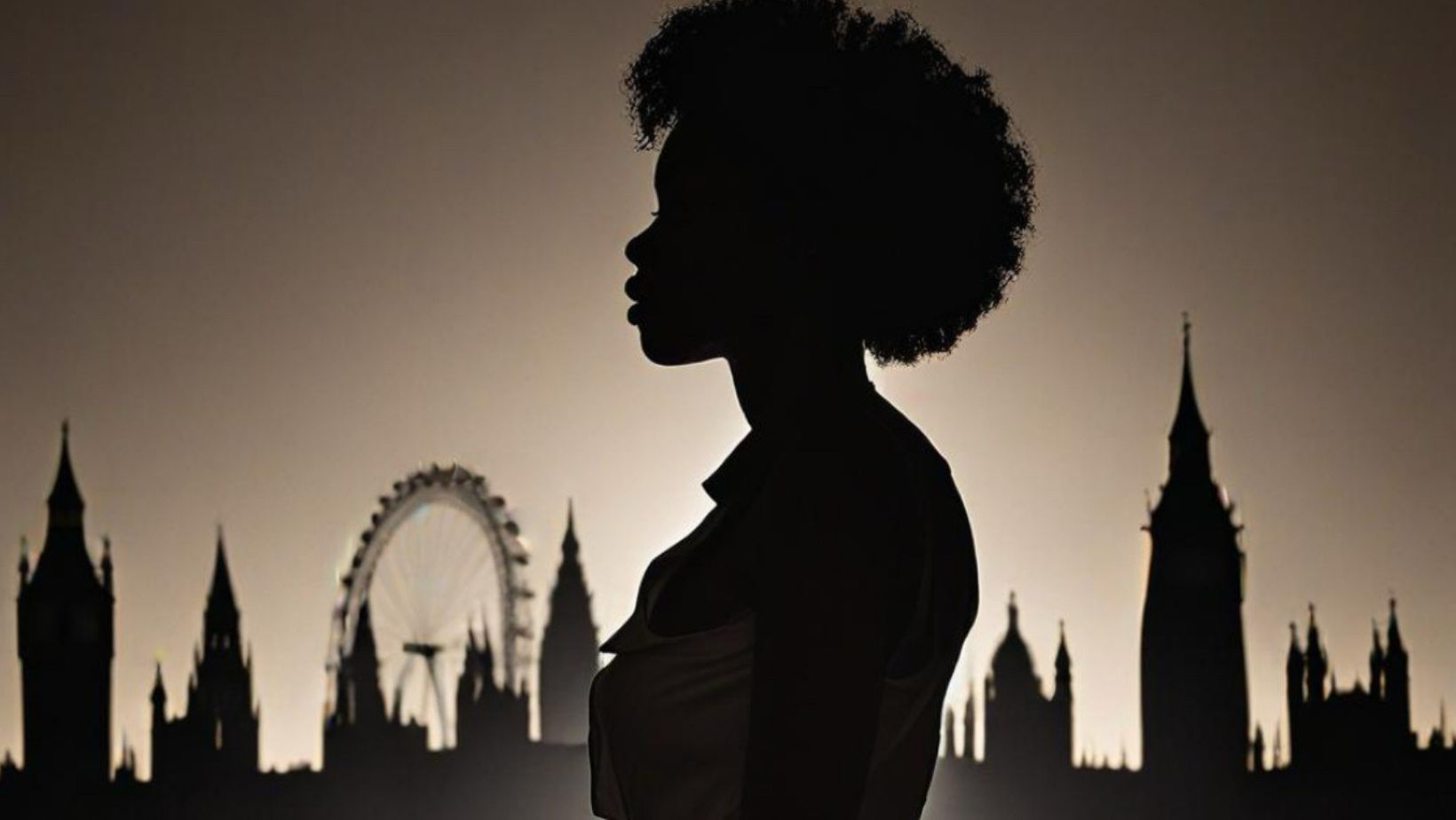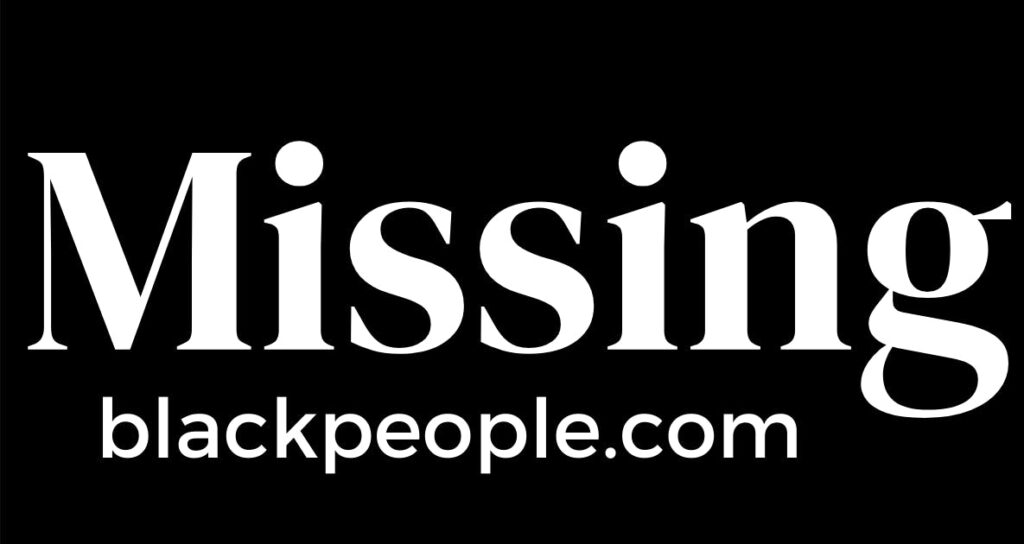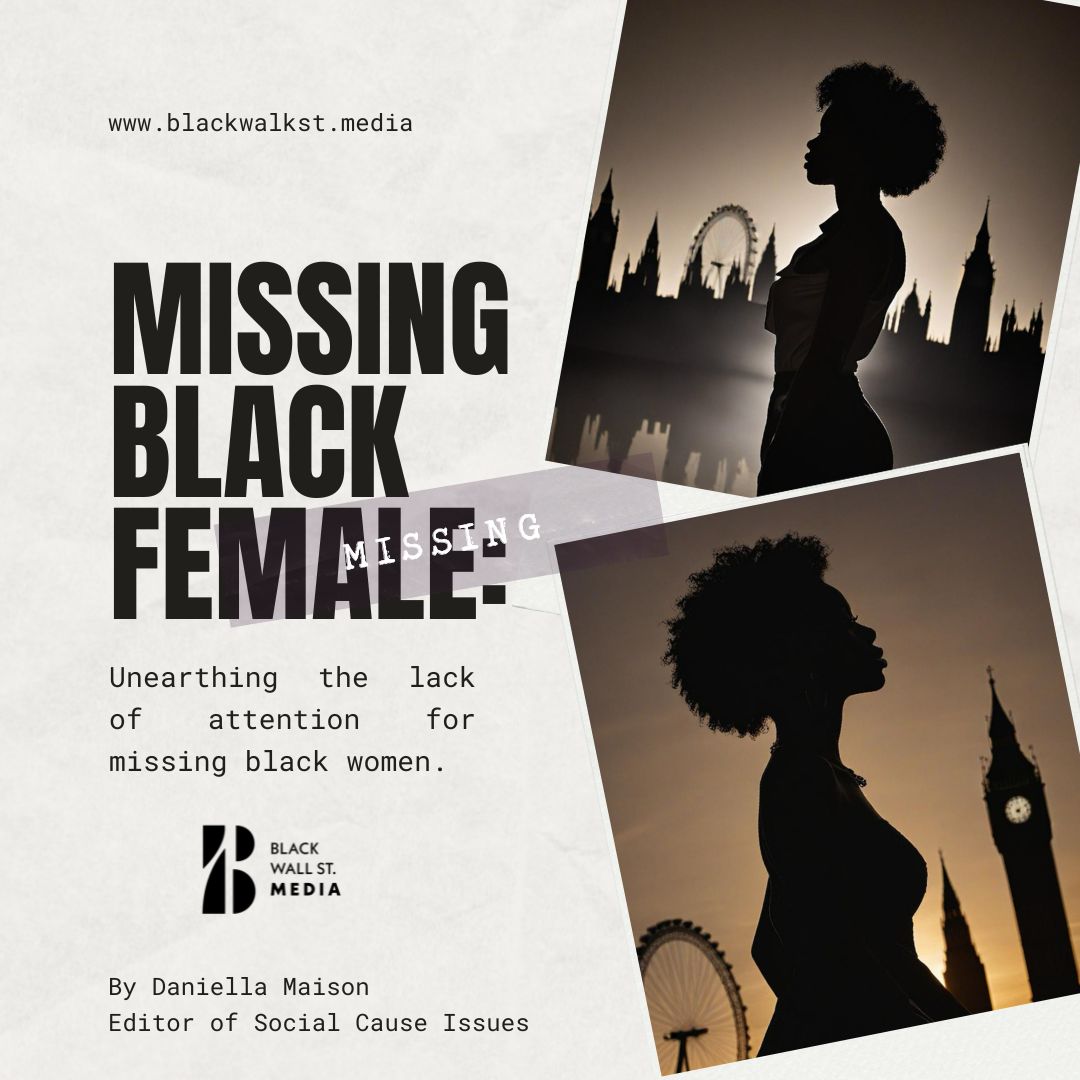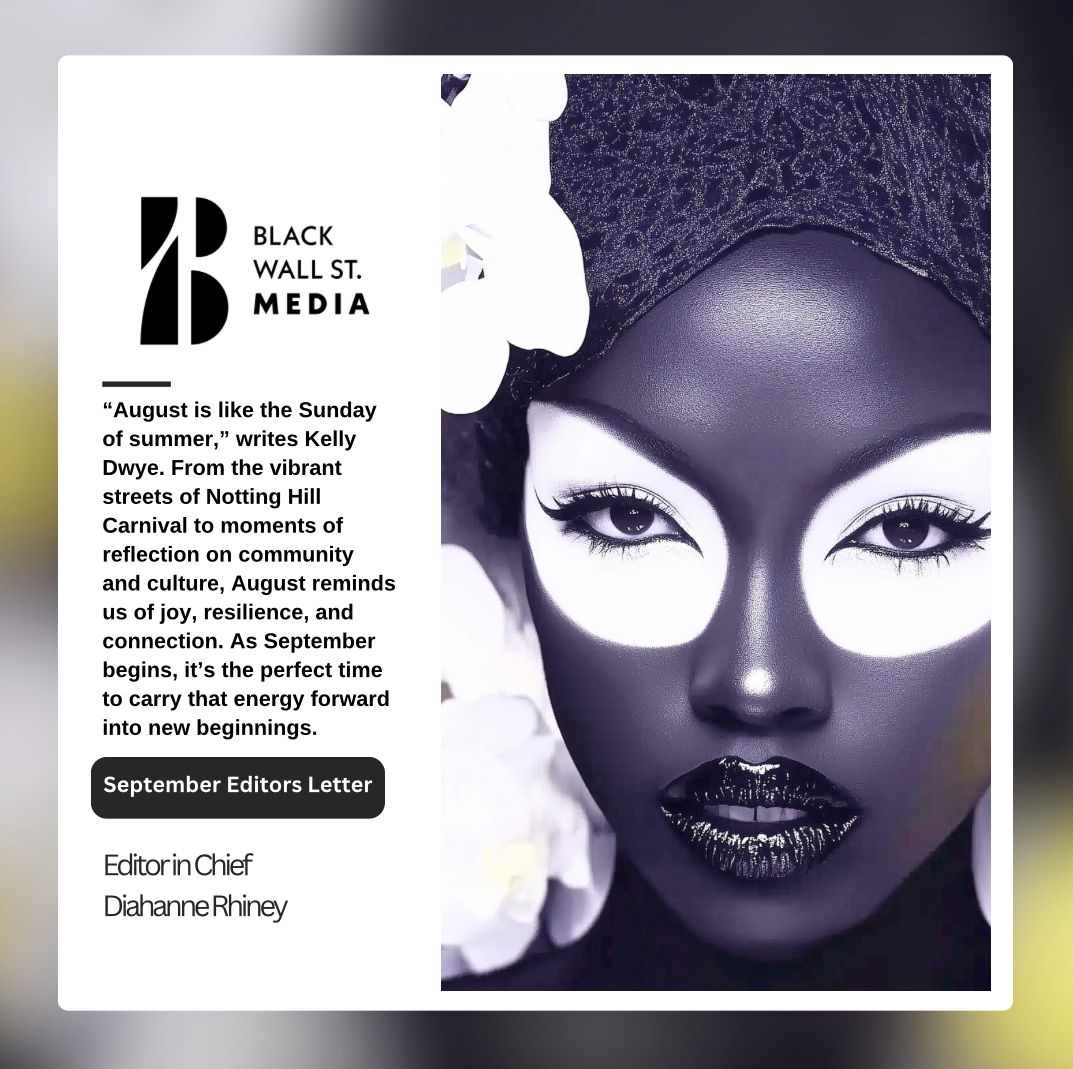Social Justice and Advocacy
Missing Black Female: Unearthing the lack of attention for missing black women.
“Why do missing Black women receive less media attention? Despite accounting for a disproportionate percentage of missing persons, their stories often go unheard. It's time to confront the media bias and systemic racism that perpetuate this injustice. Read on to learn more about this critical issue and join the fight for equal representation.”
Daniella MaisonEditor of Social Cause Issues
When Dr Michael Mosley disappeared on the Greek island of Symi last week, it was headline news.
His story received extensive media coverage, extending to the realm of social media in a number of hours and his sudden vanishing was featured on all national (and some international) news channels.
The nation was gripped, and when his wife sent out a message of hope for his safe return, we hoped with her. Tragically, after a major five-day search, his body was found.
While it is important not to diminish the light of any individual on cases such as these, it is impossible to ignore the glaring disparities that exist between who is reported in media, and who is patently ignored, and the role that structural racism and other inequalities play in the status quo.
According to data from the National Crime Agency, Black people accounted for 14 per cent of missing people in England and Wales between 2019 and 2020, over four times (3 per cent) their relative population.
In London between 2019 and 2020, Black people accounted for 36 per cent of missing people, nearly three times their population in the city (13 per cent). Compounding these disturbing figures is when it comes to black women and girls in particular, the Police have consistently issued limited appeals around the disappearances and, complicitly, the mainstream media continues to fail to report on missing black women and girls.
When we contrast last week’s steady stream of Dr Moseley headlines with the case of nursing student Joy Morgan, for example, the disparity is monumental. Joy went missing after attending church in December 2018. Her disappearance was not considered newsworthy during those crucial first few days, and her body wasn’t found until 9 months after her disappearance.
There are countless examples of cases that have garnered nationwide coverage and simultaneously shone a Belisha beacon on the harsh reality that black females simply do not receive the same media attention when they vanish.
When Nicola Bulley went missing while walking her dog in Lancashire earlier this year, the National (prompted by wall-to-wall coverage from the media) reaction to her case was described as a ‘carnival of hysteria’.
The mystery of her disappearance gripped the nation for three weeks. At one point, Nicola’s case was featured in the news more than 6,500 times a day. The small portion of media coverage (or none), accompanied by an all-too-often substandard police investigation, for the black women who go missing every day, raises the disturbing question of how much the lives of Black women are valued and perceived.
The deeply rooted mechanisms of misogynoir mean that it is seemingly onerous for the world to view black women as human beings who have family and friends who love them and want them to return home safe and sound.
Society has become so case-hardened towards the plight of black females that failing them has become a habitual practice.
A practice that the media chooses to constantly bolster and perpetuate. The sobering truth is a that the media promotes the notion that a photograph of a Caucasian person smiling at the camera ‘captures the hearts of the nation’ in ways that we allegedly will not, thus our stories remain unsellable.
Attention for Nicola Bulley was warranted, there’s no doubt about that. But we cannot ignore that there is a distinct overrepresentation in media when white women go missing, termed ‘missing white woman syndrome by Gwen Ifill.
This is an issue across the globe. Hundreds of thousands of unaccounted for minority women desperately need media attention, too. In America in 2022, almost 100,000 Black women and girls reportedly vanished without a trace.
To put that number into perspective, that’s more women than could fill Wembley stadium. Just like the media, the police do not appear to take these cases and the numbers tied to them seriously.
Of course, this travesty perseveres when missing black women are found to be deceased, particularly in cases of Afrofemicide. The consequences are evident in egregious examples such as American serial killer Samuel Little, who murdered 93 people and got away with it for so long because his victims were mostly Black and brown women.
The silencing of and structural biases against Black women and girls prevails, and they thrive due to stereotyping. As such, Black females are rarely perceived as victims.
It’s the same perception that the media encourage when they imply that a murdered black boy was possibly ‘gang affiliated ’. Black Boys are presented as either affiliated with violence, deserving of harm or unable to be harmed. Similarly, the perception is that missing black girls are trouble makers, promiscuous, deviant, and as such their lives don’t matter.
This maintains a long legacy of impunity for violence against Black women and girls. So, they continue to be not seen as victims. They are either ignored and overlooked, or vilified and adultified. In this sorry state of affairs, it is difficult not to be disheartened by the misogynoir and intersectional mechanisms of discrimination towards black women that firmly underpins it.
This week, 19-year old Jay Slater an apprentice bricklayer, from Lancashire, left his friends on a night out after attending a festival in Tenerife, and hasn’t been seen since.
His story was headline news by Tuesday morning with the Daily Mail posting ‘updates’ every several hours. A MailOnline graphic detailed the timeline of events from when Jay attended the three-day NRG festival to his location when his phone died.
Journalists from every major outlet have flown over to ‘retrace his steps’. Just months before, a body recovered from the Thames was confirmed to be that of a missing London student, Samaria Ayanle, who was also 19. She was last seen on CCTV at her student accommodation near Marble Arch in the early hours of February 22.
A missing persons investigation into Ms Ayanle’s disappearance was launched weeks later when university staff reported it to police. It was only then that police working to identify the body were able to link the inquiries. Samaria was not headline news.
Some of Ms Ayanle’s friends described the gap as “unforgivable and unjust”. On a social media page set up to fund Ms Ayanle, a friend wrote: “Rest in power. My heart goes to you.
The treatment of this case by the police and SOAS is shocking. Her having been found on the same day yet being unidentified for almost three weeks is unforgivable and unjust.”
There was no ‘carnival of hysteria’ for Samaria. Research into the ethnicities of missing people (conducted by the charity Missing People) indicates that “people from minority ethnic groups were missing for longer, less likely to be found by the police, and less likely to be recorded as being at risk, than white people.”
The finding of “institutional racism and sexism in the Met” reviewed by Baroness Casey must be challenged. In the 1999 enquiry ‘into the matters arising from the death of Stephen Lawrence’ it was summized that the police’s treatment of Stephen’s case and family should be ‘a clarion call to seize the chance to tackle and to deal with the general problems and differing perceptions that plainly exist between the minority ethnic communities and the police.’
The enquiry included a 1981 quote from Lord Scarman who said: “The evidence which I have received, the effect of which I have outlined …., leaves no doubt in my mind that racial disadvantage is a fact of current British life….. Urgent action is needed if it is not to become an endemic, ineradicable disease threatening the very survival of our society …… racial disadvantage and its nasty associate racial discrimination, have not yet been eliminated.
They poison minds and attitudes; they are, as long as they remain, and will continue to be a potent factor of unrest”.
The enquiry concluded that ‘It is a sad reflection upon the intervening years that in 1998-99 those extracted words have remained relevant throughout both parts of our Inquiry.’
Even sadder that now some 43 years later, those words are still as relevant. The multiple travesties of the case of Bibaa Henry and Nicole Smallman stand as testimony to that.
Their mother, Mina Smallman, said she believed race was a factor as the family’s pleas for help before their bodies were found, which ultimately went unheeded. She said: “No one was taking it seriously.
There was no search put in place by police. Our phone calls were being disregarded. There was no action at all … Bibaa wasn’t even on as a missing person on the Sunday after we’d made calls on the Saturday. And you know, it’s shameful.
It’s shocking. Right from the very beginning, they knew they were looking for two girls, two women of colour.
I’m trying to understand why they didn’t follow procedure. What could the explanation be?”
It is up to corporations and media networks, to include narratives that reflect a diverse world. That is, one that is multi-ethnic, multi-bodied and gendered, so that all echelons of society are heard, understood and reflected without the shadow of stereotyping.
All media coverage must be equal so that every missing person is a hashtag or a trending topic, that every missing person receives nationwide manhunts and search parties take place.
That every missing person is headline news, and that black missing women and children’s families be treated sensitively and professionally in their time of great need.
More government funding must be allocated to agencies, groups, and organisations for the purpose of researching and locating black missing women and children. Until these crucial requirements are met, as a community, we must continue to “make noise” about protecting black women and girls.
We must continue our efforts to be proactive. Sharing photographs of missing black and brown men, women and children within our networks helps these cases to go viral and makes a difference.
As a diaspora, we must say, “Enough is enough.” Our lives matter. Our safety and dignity are paramount. Our children deserve to live in a country that values them, honours their safety and wellbeing, and deems them worthy.
Enough, is enough.
“”
Daniella MaisonEditor of Social Cause Issues









































